I recently received an unusual customer inquiry. One of my clients operates an M365 environment with Exchange Online and is concerned about the availability of email communication in the event of an Azure and/or M365 outage.
Preface:
In my opinion, Microsoft does an excellent job ensuring the availability of services within the Microsoft Cloud globally. There are options to secure individual services and ensure that services are redundantly designed within single data centers, regions, or even globally in a multi-layered manner, thereby rapidly reducing the risk of service outages.
Moreover, the outage of Microsoft services, while sometimes global, is typically resolved in a very short time. Experience shows that any disruptions are resolved within hours, as Microsoft itself has specialists on standby who can quickly troubleshoot and resolve outages to minimize global impact.
Often, the concern is more about a lack of trust when a customer still requires protection against such incidents. Is this even possible? Let’s find out!
Tests:
As the basis for the following tests, I used a Microsoft CDX tenant (demo tenant with full rights and pre-configured demo mailboxes) and installed Veeam for M365 v7. Additionally, I installed and configured an Exchange Server 2019 in a basic setup within an on-premises vSphere environment.
The goal is to restore a mailbox managed within M365 and backed up with Veeam to an on-premises Exchange Server and operate it productively there.
Procedure:
Adding the On-Premises Exchange-Servers:
The first step involved adding the on-premises Exchange Server within the Veeam for M365 environment:
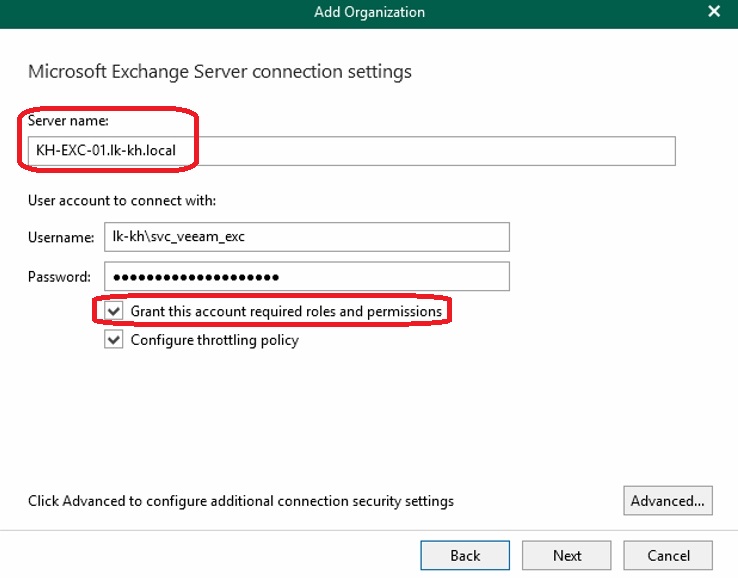
During this process, I encountered the following error:
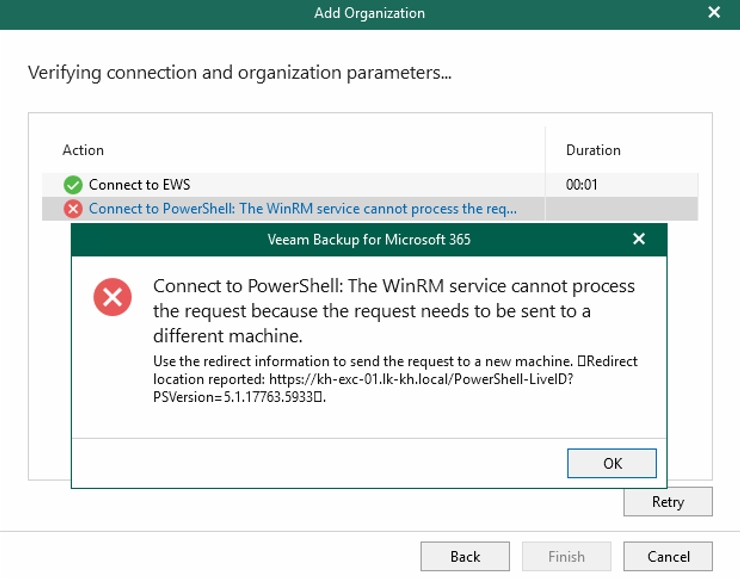
This issue was related to, among other things, insufficient permissions for the service account and a specific configuration within the on-premises Exchange Server. I configured the Exchange Server for “Basic Authentication” for the test, and the wizard completed successfully:
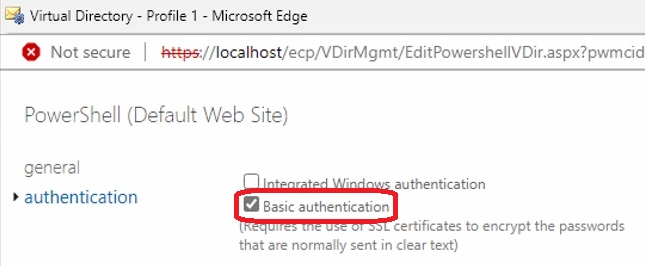
Since I did not create a Certificate Authority (CA) for this test, I ignored the following certificate warning:
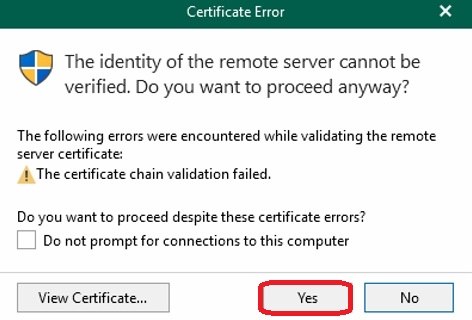
As a result, the Exchange Server was successfully added without any errors:

Creating the Mailbox to be restored on the On-Premises Exchange Server:
To ensure that a mailbox with the same name (and corresponding account) exists in both environments, I manually created the mailbox on the on-premises Exchange Server:
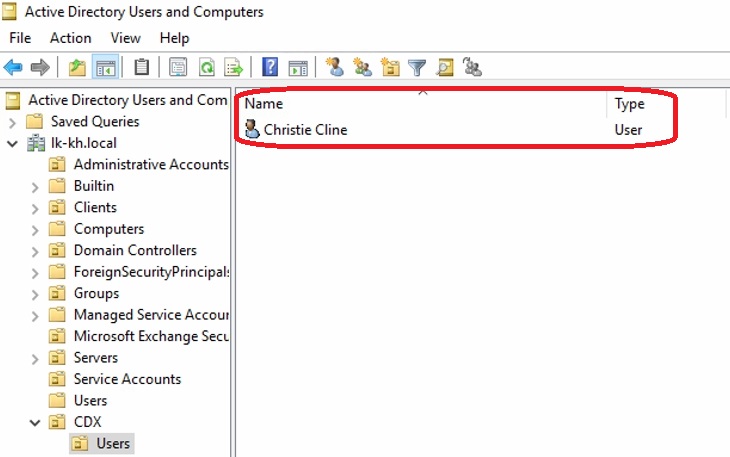

Note: The CDX tenant, as mentioned above, provides various demo mailboxes with content available for testing. For this restore test, I selected a random existing mailbox with the alias “ChristieC.”
Performing the Restore:
I utilized the restore wizard within the Veeam interface and initiated the restore attempt:
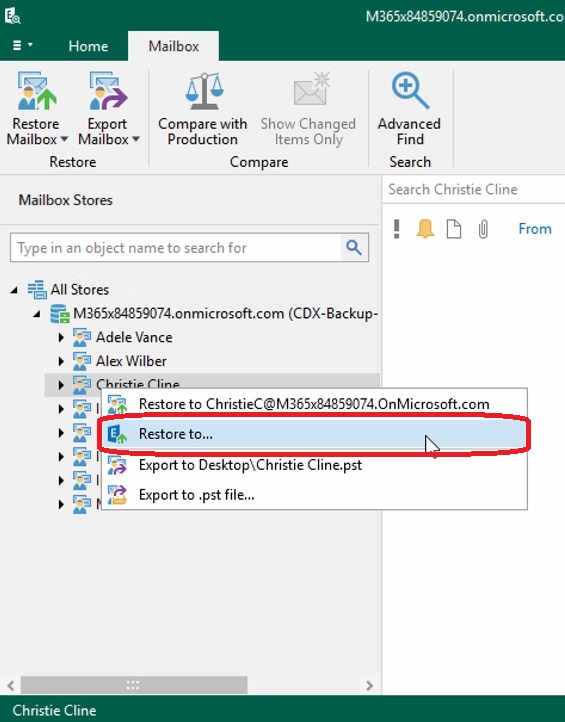
I selected the on-premises Exchange Server as the target for the restore:
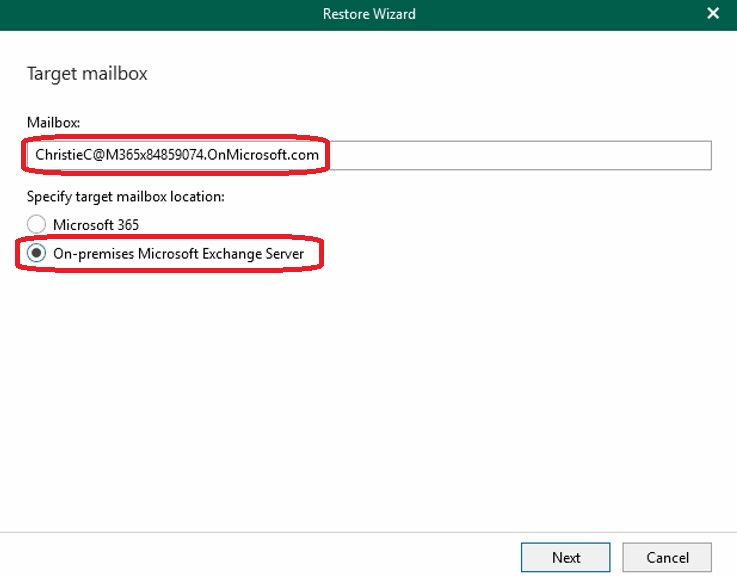
We now arrive quickly and unceremoniously at the final error:
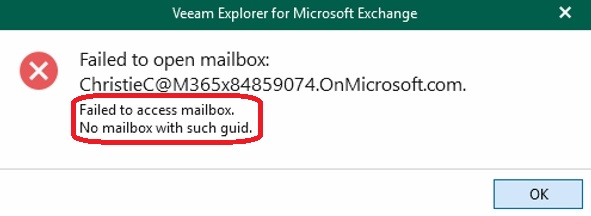
Explanation:
Veeam uses the GUID of the account or mailbox as a comparison parameter for the restore process, not the name. This approach, which is logically sound, reveals a limitation in this scenario.
Although a mailbox with the identical name (and email address) exists, restoring it directly is not possible.
Workaround / Idea:
Since exporting a backed-up mailbox within Veeam to a PST file is possible, one potential solution is to save the corresponding mailbox from the backup as a PST file and then import it into the on-premises mailbox. This process requires expertise in the Microsoft environment and can be complex and error-prone in a mass restore scenario.
Advantages:
Data Retention: The data is not lost. Despite a “failover” (essentially just switching to the on-premises Exchange Server), you can still access and work with valuable information by manually importing the PST file.
Disadvantages:
Restoration Path: A method to return to Exchange Online must be established, which can be highly resource-intensive depending on the duration of the failover scenario.
Administrative and User Workload: The workload for admins and end users can be significantly high. Users, who may not differentiate between a PST file and a “real” mailbox, could face substantial difficulties.
Backup Needs: The on-premises Exchange infrastructure used during the failover also needs to be backed up. Although the organization can be pre-configured in Veeam for M365, two key points must be considered:
Backup Requirement: Backups are needed for the failover infrastructure once it becomes operational.
Conclusion:
Does the scenario of restoring an Exchange Online mailbox to an on-premises Exchange Server work?
Not without significant challenges!
This highlights the importance of defining and validating strategies for emergency scenarios and major IT infrastructure component failures. This limitation appears to affect some European customers.
As mentioned in the preface, it is crucial to weigh the effort required to implement and operationalize such a scenario across the organization. This contrasts with Microsoft’s extensive efforts to ensure maximum service availability and continuous improvement.
Given the price sensitivity of the European market, this scenario is, in my opinion, impractical for real-world applications.
Hybrid Infrastructures:
An important note:
The above scenario describes a pure Exchange Online source infrastructure and does not address hybrid scenarios, as the proportion of hybrid Exchange infrastructures is declining.
In hybrid deployments, the mailbox GUID is identical (since it is the same mailbox and account), so the above scenario can be partially applied to such environments.
